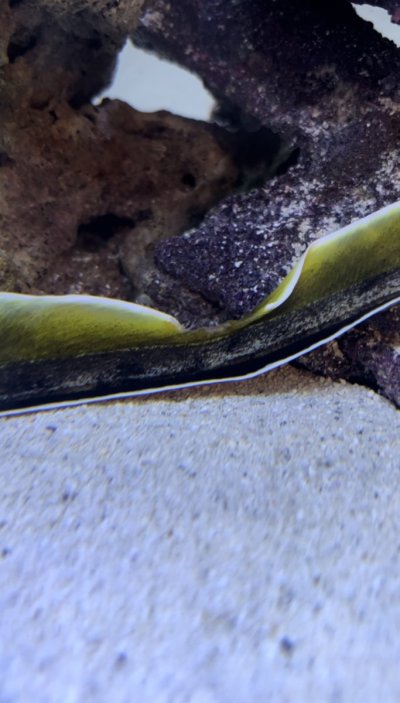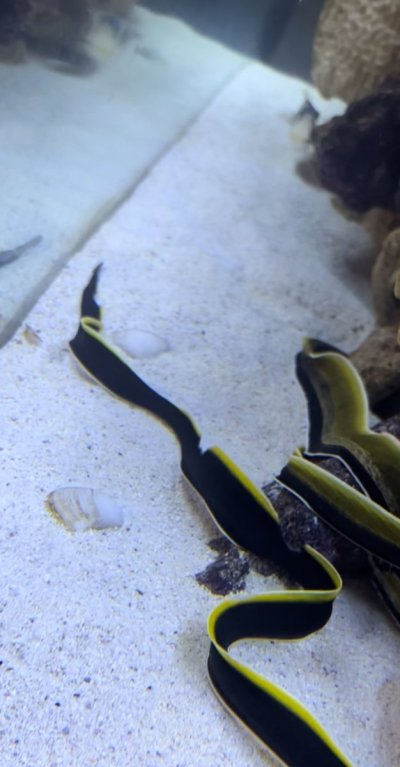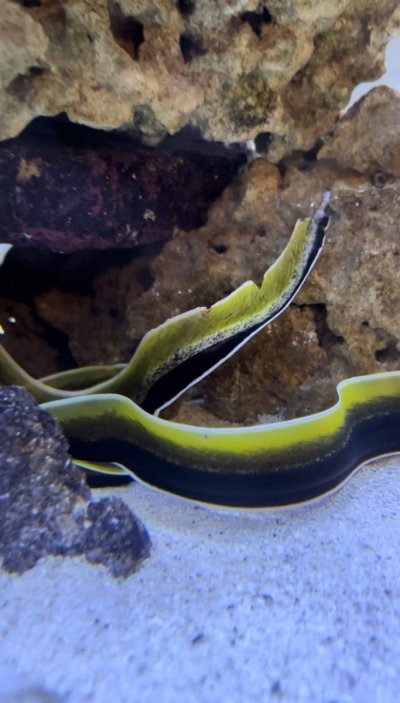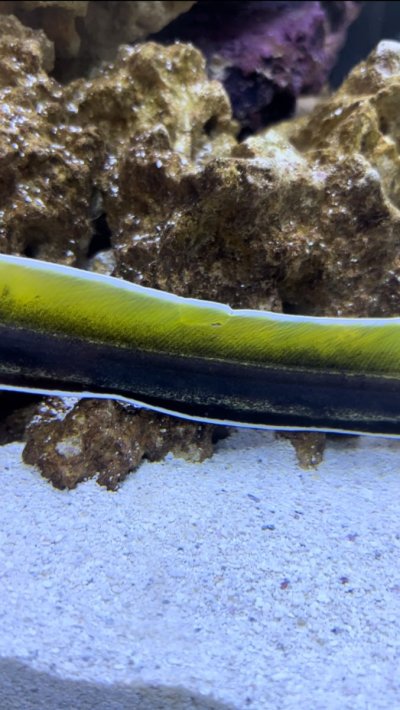I added 3 ribbon eels to my tank a week ago - one juvenile, one just starting to turn blue on the underside of its neck with yellow eyes, and one (pictured) that was blue when I first saw it at the LFS, darkened up, and questionably looked to be turning yellow when I brought it home. I figured even if it's a terminal eel, it's in captivity and deserved a home until the time comes. Its color tends to be more dark navy and pale yellow toward the tail; this was the lightest I've seen it. Has anyone who's kept them through the color change noticed this darkening, or is this stress coloration/something else? It's by far the most active of the 3.
I threw in 5 live mollies on Thursday. The blue/yellow eel went after one very gingerly, it got away, and the eel had no further interest. Over the next 2 hours, 3 got eaten by the other eels, 1 was injured by an eel and ended up in my pufferfish's mouth, and 1 was hiding by the overflow and gone the next morning.
Today, I tried pieces of thawed Hikari silversides. The blue/yellow eel would get close then back away and would not pick up the food if I dropped it right by it. The other's ate great, and the eel turning blue even tried to steal my puffer's clam.
I'd really appreciate any advice on getting this one eating and what those who have kept them long term feed. I've also heard they do better with live and to stay away from krill due to the thiaminase. That being said, should I alternate frozen and live or feed frozen other than silversides? How frequently would you recommend feeding them and how much/should I let them gorge? How many Mollies should I throw in? I know ribbon eels are notorious for being difficult to feed/keep, but I'll do whatever they need to thrive. Thank you!

I threw in 5 live mollies on Thursday. The blue/yellow eel went after one very gingerly, it got away, and the eel had no further interest. Over the next 2 hours, 3 got eaten by the other eels, 1 was injured by an eel and ended up in my pufferfish's mouth, and 1 was hiding by the overflow and gone the next morning.
Today, I tried pieces of thawed Hikari silversides. The blue/yellow eel would get close then back away and would not pick up the food if I dropped it right by it. The other's ate great, and the eel turning blue even tried to steal my puffer's clam.
I'd really appreciate any advice on getting this one eating and what those who have kept them long term feed. I've also heard they do better with live and to stay away from krill due to the thiaminase. That being said, should I alternate frozen and live or feed frozen other than silversides? How frequently would you recommend feeding them and how much/should I let them gorge? How many Mollies should I throw in? I know ribbon eels are notorious for being difficult to feed/keep, but I'll do whatever they need to thrive. Thank you!
























